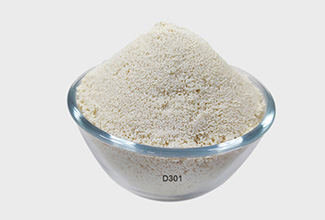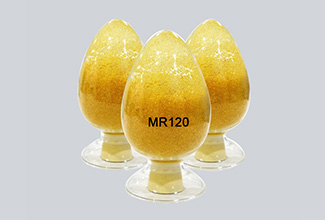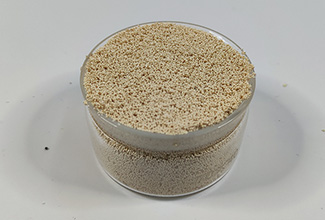What Resin Requirements Are Imposed By The Characteristics Of Different Uranium Leaching Solutions?
Uranium is a vital energy source, and the efficiency and stability of its extraction process directly impact energy supply. Ion exchange resins play a central role in uranium extraction, efficiently adsorbing uranium ions from the leachate, enabling uranium separation and enrichment.
However, the uranium leaching process produces different types of leachates, primarily acidic and alkaline. These differing chemical properties present unique challenges for the application of ion exchange resins. Acidic leachates are characterized by low pH and high ion concentrations, while alkaline leachates exhibit high pH and specific ion complexes. These differences require resins with varying properties to adapt.
Selecting the right resin is crucial for uranium extraction. On the one hand, the right resin significantly improves uranium recovery and ensures extraction efficiency. On the other hand, high-quality resins offer a longer lifespan, reducing the frequency of resin replacement and lowering operating costs. Furthermore, the right resin ensures stable operation of the entire extraction process, avoiding production interruptions due to resin problems and ensuring operational stability.
1. Understanding Uranium Leaching Solutions
1.1 Acidic Leaching Solutions
Acidic leach solutions are typically based on sulfuric acid because they effectively dissolve the uranium in uranium ore, forming extractable uranium ions.
In addition to the target uranium ions, acidic leach solutions also contain high concentrations of sulfate (SO₄²⁻), along with significant amounts of iron ions (including ferric iron (Fe³⁺) and ferrous iron (Fe²⁺)), and aluminum ions (Al³⁺). The presence of these impurities can interfere with subsequent uranium separation.
In an acidic environment, uranium primarily exists as a UO₂²⁺-sulfate complex. This form of uranium ion requires resins with specific properties for efficient adsorption.
1.2 Alkaline Leaching Solutions
Alkaline leach solutions typically use a carbonate/bicarbonate system. This system reduces corrosion to equipment when dissolving uranium ore and is particularly effective for certain types of uranium ores. Alkaline leachates have a high pH. In this environment, uranium forms a [UO₂(CO₃)₃]⁴⁻ complex. This negatively charged complex structure is distinct from the uranium form in acidic leachates, placing different demands on the resin's adsorption properties.
Alkaline leachates often contain calcium (Ca²⁺), magnesium (Mg²⁺) ions, and silicon impurities, which easily deposit on the resin surface, causing fouling and affecting resin performance.
1.3 Other Leaching Media (Less Common)
In addition to acidic and alkaline leachates, chloride, nitrate, or mixed systems are used as leaching media in some specialized uranium extraction scenarios.
For example, chloride leaching systems may be employed in certain high-salinity uranium mining environments, while nitrate systems are used in specialized laboratory research or small-scale production. Due to the unique chemical properties of these specialized leaching media, conventional resins are not suitable for their requirements. Therefore, customized resin solutions are required to ensure effective uranium extraction.
2. Resin Requirements for Acidic Leachates
2.1 Strong Acid Resistance
Acidic leachates have a low pH. Long-term exposure to this highly acidic environment can easily lead to structural degradation of the resin, resulting in decreased adsorption performance. Therefore, resins used in acidic leachates must possess strong acid resistance to withstand the damage to the resin skeleton caused by the low pH, ensuring stable structure and performance throughout their lifecycle.
2.2 High Selectivity
The sulfate ion concentration in acidic leachates is much higher than the uranium ion concentration, and a large number of impurity ions such as iron and aluminum are also present. The resin must exhibit high selectivity for uranium-sulfate complexes, accurately identifying and preferentially adsorbing uranium ions among numerous interfering ions to avoid reduced uranium recovery due to the adsorption of large amounts of impurity ions.
2.3 Resistance to Fe⁺ and Al⁺ Contamination
Fe⁺ and Al⁺ readily hydrolyze in acidic environments to form hydroxide precipitates. These precipitates can adhere to the resin surface or clog the resin pores, causing fouling and significantly reducing the resin's adsorption capacity and rate. Therefore, the resin must exhibit excellent resistance to Fe⁺ and Al⁺ contamination to reduce impurity deposition on the resin.
2.4 Mechanical Strength
During continuous column operation for uranium extraction, the resin is constantly subjected to the impact of water flow and collisions between resin particles. If the resin lacks mechanical strength, it is prone to breakage and wear, resulting in fine resin particles. This not only causes resin loss but can also clog equipment pipelines, impacting the continuity of the entire production process. Therefore, the resin must possess sufficient mechanical strength to withstand the rigorous conditions of continuous column operation.
3. Resin Requirements for Alkaline Leaching Solutions
3.1 Excellent Alkali Resistance
Alkaline leach solutions have a high pH and contain large amounts of carbonates and bicarbonates, which can challenge the chemical stability of the resin. Resins used in alkaline leach solutions must exhibit excellent alkaline resistance, maintaining a stable chemical structure in high alkalinity environments without degradation or performance loss, ensuring long-term and effective adsorption of uranium ions.
3.2 Strong Affinity for Negatively Charged Uranyl-Carbonate Complexes
In alkaline environments, uranium primarily exists as a negatively charged complex, [UO₂(CO₃)₃]⁴⁻. Conventional resins have weak adsorption capacity for negatively charged ions. Therefore, resins used in alkaline leachates must have a strong affinity for negatively charged uranyl-carbonate complexes, achieving efficient uranium capture through a specific adsorption mechanism.
3.3 Resistance to Ca²⁺, Mg²⁺, and Silicon Contamination
Ca²⁺ and Mg²⁺ in alkaline leachates readily react with carbonates in the leachate to form calcium carbonate and magnesium carbonate precipitates, while silicon impurities may form substances such as silica gel. These precipitates and colloidal substances adhere to the resin surface, clogging the resin pores and reducing its adsorption performance. Therefore, the resin must have excellent resistance to Ca²⁺, Mg²⁺, and silicon contamination to reduce the adhesion of contaminants to the resin.
3.4 Fast Kinetics
During the uranium extraction process, the resin's adsorption and elution rates directly impact production efficiency. For alkaline leachates, the relatively complex structure of uranium complexes can result in slow kinetics for both adsorption and elution. Therefore, the resin must possess fast kinetics, enabling it to complete uranium loading (adsorption) and elution in a short period of time, thereby improving production efficiency and meeting the requirements of industrial continuous production.
4. Key Operational Considerations for Different Leaching Systems
4.1 Temperature Stability
During the actual uranium extraction process, the leachate temperature may rise due to process conditions (such as heated leaching and ambient temperature fluctuations). Excessively high temperatures can damage the resin's chemical structure, leading to decreased resin performance, such as reduced adsorption capacity and poor selectivity. Therefore, in both acidic and alkaline leaching systems, the resin must exhibit excellent temperature stability, maintaining stable performance even at higher operating temperatures to ensure smooth uranium extraction.
4.2 Mechanical Strength
In a continuous flow system, the resin is constantly subjected to water flow and friction and collision between resin particles. If the resin's mechanical strength is insufficient, it is prone to breakage and wear. The resulting fine resin powder will be lost with the water flow, resulting in resin loss. It may also clog equipment pipes and valves, affecting system operation. Therefore, the mechanical strength of the resin is a key consideration in all leaching systems. Sufficient mechanical strength can reduce resin loss, extend resin life, and ensure the stable operation of the continuous flow system.
4.3 Contamination Resistance and Ease of Regeneration
During the uranium extraction process, impurity ions and precipitates in the leachate can easily contaminate the resin, leading to a decrease in its adsorption performance. Resins with excellent contamination resistance can reduce the adhesion of contaminants and maintain good adsorption performance. At the same time, after a period of use, the resin's adsorption capacity gradually saturates, requiring regeneration to restore its adsorption capacity. Easily regenerated resins can quickly restore performance through simple regeneration processes (such as elution with acid or alkali solutions of specific concentrations). The regeneration process minimizes resin loss and slows performance degradation, ensuring long-term, stable, and efficient uranium recovery.
4.4 Radiation Resistance
Uranium is radioactive. During the uranium extraction process, the resin is exposed to a radioactive environment with a high uranium content for extended periods. Radiation can damage the resin's molecular structure, causing cross-linking and degradation, which in turn affects its adsorption performance and service life. Therefore, resins used in uranium extraction must possess excellent radiation resistance and be able to maintain structural integrity in radioactive environments, ensuring stable performance and preventing radiation-induced degradation of uranium recovery efficiency.
5. Why Resin Selection is Critical for Uranium Producers
5.1 Impact on Uranium Recovery
The resin's adsorption capacity, selectivity, and adsorption kinetics directly determine uranium recovery. Choosing the right resin effectively adsorbs uranium ions in complex leachate systems, minimizing uranium losses during extraction and significantly improving uranium recovery. Conversely, inappropriate resin selection can result in significant uranium residues in the leachate due to weak adsorption capacity and poor selectivity, reducing uranium yield and impacting the company's economic profitability.
5.2 Impact on Operating Costs
The right resin has a longer service life, reduces the frequency and quantity of resin replacements, and lowers resin procurement costs. Furthermore, high-quality resins consume less regeneration chemicals during regeneration and offer high regeneration efficiency, reducing the cost and time of regeneration operations. Furthermore, the right resin can minimize production interruptions caused by resin problems, lowering the additional costs associated with equipment maintenance and production downtime, and ultimately reducing operating costs in many ways.
5.3 Achieving Environmental Compliance through High-Efficiency Separation
During the uranium extraction process, poor resin separation results in ineffective removal of uranium and other harmful impurities from the leachate. Discharge of these pollutants into the wastewater can potentially pollute the environment and violate environmental regulations. Selecting a high-efficiency resin effectively separates uranium from impurities, improving wastewater treatment efficiency and ensuring that discharged wastewater meets environmental standards. This helps companies achieve environmental compliance and avoid penalties for environmental violations.
5.4 Case Study (Acidic and Alkaline Operations) Illustrates the Return on Investment of the Right Resin Selection
Acidic Operations Case Study: A uranium mining company initially used a conventional resin to treat acidic leachate. Due to the resin's poor acid resistance and poor contamination tolerance, the resin's lifespan was only three months, uranium recovery was only 85%, and regeneration agent consumption was high. Subsequently, they switched to a highly acid-resistant, highly selective resin designed specifically for acidic leachate. This extended the resin's lifespan to 12 months, increased uranium recovery to over 95%, and reduced regeneration agent consumption by 30%. Calculations show that while the procurement cost of the new resin increased slightly, the company's annual return on investment increased by 25%, taking into account the increased uranium production, reduced resin replacement frequency, and reduced reagent costs.
Alkaline Operation Case Study: Another uranium mining company employed an alkaline leaching process. Initially, conventional resins were used. Due to the resin's weak adsorption affinity for uranyl-carbonate complexes and its susceptibility to contamination by Ca²⁺ and Mg²⁺, uranium recovery was only 80%, requiring resin replacement every six months. After switching to a specialized resin compatible with alkaline leaching solutions, uranium recovery increased to 92%, the resin's service life was extended to 18 months, and regeneration efficiency was significantly improved. The company's additional investment in resin procurement was recouped within one year through increased uranium production and reduced operating costs, generating substantial annual profits for the company, resulting in a significant return on investment.
6. How COMCESS Supports Uranium Extraction Projects
6.1 Providing Customized Resins for Specific Leaching Chemistry
COMCESS boasts a dedicated R&D team and advanced resin production technology. We can custom-develop ion exchange resins tailored to the specific chemical characteristics of a client's uranium leachate (such as leachate type, pH, ion composition, and impurity content). By optimizing resin structure and functional groups, we ensure excellent adsorption performance, stability, and anti-contamination capabilities in specific leaching systems, meeting the client's personalized uranium extraction needs.
6.2 Proven Performance in Acidic and Alkaline Uranium Mining Operations
COMCESS's resin products have been proven and applied in numerous acidic and alkaline uranium mining operations. In acidic uranium mining projects, its highly acid-resistant resins operate stably in low pH environments and high impurity ion concentrations, enabling efficient uranium recovery. In alkaline uranium mining projects, specialized resins designed for uranyl-carbonate complexes exhibit strong adsorption affinity and excellent resistance to Ca²⁺, Mg²⁺, and silica contamination, providing clients with a stable and reliable uranium extraction solution that has been widely recognized.
6.3 Technical Support: Column Design, Regeneration Optimization, and Lifecycle Consulting
In addition to providing high-quality resin products, COMCESS also provides comprehensive technical support. In terms of column design, COMCESS optimizes the size, structure, and operating parameters of ion exchange columns based on the client's production scale, leachate throughput, and resin characteristics to ensure efficient adsorption and elution within the columns. In terms of regeneration optimization, COMCESS determines the optimal regeneration agent concentration, dosage, and regeneration process through experimental research and on-site commissioning, improving resin regeneration efficiency and reducing regeneration costs. In terms of lifecycle consulting, COMCESS provides clients with maintenance recommendations, performance monitoring methods, and replacement cycle assessments during resin operation, helping them maximize resin lifespan and reduce operating costs.
6.4 Cooperation Record with International Uranium Producers
COMCESS has established long-term, stable partnerships with numerous internationally renowned uranium producers through its high-quality resin products and professional technical services. During these partnerships, COMCESS provides clients with customized solutions tailored to the geological characteristics and leaching processes of uranium deposits in different countries and regions, helping them improve uranium extraction efficiency and reduce operating costs. This has earned the trust of international uranium producers and established a strong brand image in the global uranium extraction industry.
-
 D301 Macroporous Weak Base Anion Exchange ResinAppearance: Milky white or light gray opaque spherical particles.Ionic form: Free baseVolume complete exchange capacity(mmol/ml):≥1.3
D301 Macroporous Weak Base Anion Exchange ResinAppearance: Milky white or light gray opaque spherical particles.Ionic form: Free baseVolume complete exchange capacity(mmol/ml):≥1.3 -
 MR120 Electronic Grade Polishing Ion Exchange ResinAppearance: Yellow-brown spherical particles.Ionic form:H+/OH-Volume complete exchange capacity(mmol/ml):≥0.6
MR120 Electronic Grade Polishing Ion Exchange ResinAppearance: Yellow-brown spherical particles.Ionic form:H+/OH-Volume complete exchange capacity(mmol/ml):≥0.6 -
 Chelating Resin for Precious Metals RecoveryAppearance: Milky to light yellow opacity spherical beadsIonic form:Na+Volume complete exchange capacity(mmol/ml):≥2.0
Chelating Resin for Precious Metals RecoveryAppearance: Milky to light yellow opacity spherical beadsIonic form:Na+Volume complete exchange capacity(mmol/ml):≥2.0

